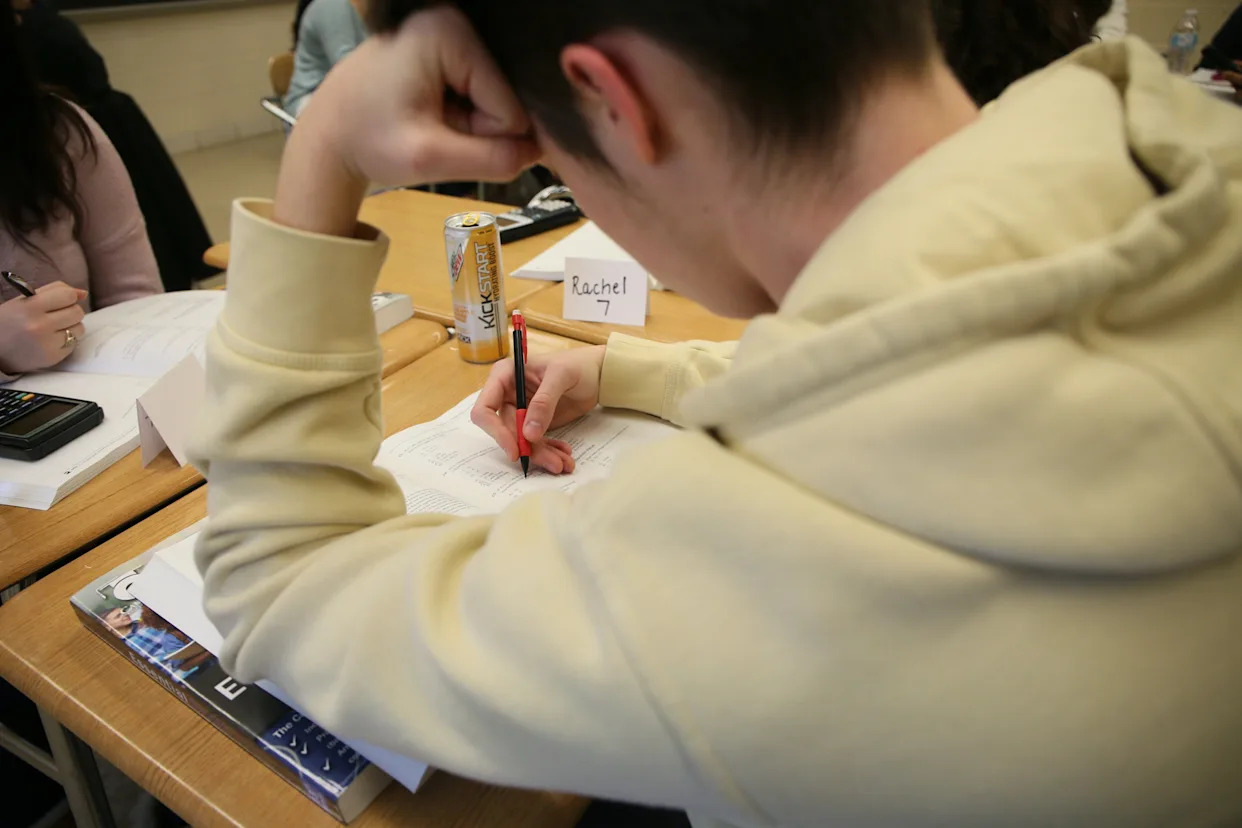
Illinois students could be held to new standards for school testing, a shift the state school board says will better prepare them for college and postsecondary education careers while accurately measuring performance levels.
The Illinois State Board of Education announced proposed changes to state standardized testing Tuesday — including the ACT, the Illinois Assessment of Readiness and the Illinois Science Assessment — that would create consistent measures of student performance on all state exams and make it easier to understand and track students’ progress. It would also adjust the proficiency threshold for each exam section based on grade level, determining the minimum score a student must achieve to be considered on track for their grade level in learning.
There are three major exams that Illinois students take while in school: The Illinois Assessment of Readiness is administered to students in grades three through eight each year to test their skills in English language arts and math, while the Illinois Science Assessment is only administered to students in fifth and eighth grades. Students take the PreACT in ninth and 10th grade and the ACT in 11th grade.
Currently, the three exams do not use the same levels or benchmarks to assess student learning based on their exam scores. The current testing measurements have multiple performance levels for students to be sorted into, which are categories of score ranges on the state assessment.
The varied scores from test to test can create confusion for parents and students due to the lack of consistency, Illinois State Superintendent of Education Tony Sanders said at a Tuesday media briefing.
The change will allow the board to alleviate this confusion with a proposed new uniform scoring system on each test: “below proficient,” “approaching proficient,” “proficient” and “above proficient.”
While the Illinois Science Assessment evaluates students in four levels — emerging, developing, proficient and exemplary — the Illinois Assessment of Readiness places students into five categories based on their scores: “does not meet” (expectations), “partially meets,” “approaching meets,” “meets expectations” and “exceeds expectations.”
A student is considered proficient when they are on track for their grade level in learning, and a proficiency benchmark is the score a student needs to be on track in their grade. The state determines these benchmarks.
According to the board, there is currently a mismatch between proficiency thresholds in the different sections of exams — English language arts, science and math. The threshold for proficiency in science according to a student’s exam score is too low, while the proficiency threshold for a student in English language arts and math is too high.
This resulted in students excelling in class but not reaching the proficiency mark on exams, which can lead to discouragement in students when they think about their future options postgraduation, Sanders said. He gave the example of multiple former students, now in college, who excelled in advanced placement classes and had high GPAs but did not receive proficient scores on state standardized tests.
“If they had listened to us, they might not have enrolled in college. Maybe they wouldn’t even have enrolled in dual credit (classes) while they were still in high school,” Sanders said. “… Thankfully, they didn’t listen to what these cut scores told them and instead pursued these higher opportunities. But think about the kids that did not.”
That all three required standardized tests — the ACT, Illinois Assessment of Readiness and Illinois Science Assessment — have different benchmarks for proficiency creates a sense of inconsistency and does not accurately reflect a student’s level of college or career readiness, Sanders said.
“They’re misaligned with what it actually means to succeed in college and career,” Sanders said. “This misalignment has serious, real-world consequences. Students are being denied opportunities for acceleration, misidentified as needing interventions or believing, as I said earlier, that they’re not ready to go into college.”
This discrepancy in results can be confusing for families and students trying to determine readiness levels for classes, college or careers, especially when they do well in school but do not meet the state’s level of proficiency. The new measurements aim to change that, Sanders said. For English language arts in the Illinois Assessment of Readiness, the proficiency threshold would be lowered from 750 to 735, increasing by two points each grade until they take the exam for the last time in grade eight.
The proficiency threshold for math on the Illinois Assessment of Readiness would also be lowered from 750 to 732. The proficiency levels for the math section would rise to 740 for grades four and five, 742 for grade six, and 745 for grades seven and eight.
As for the Illinois Science Assessment, which is administered only to fifth and eighth graders, students will have to increase their scores to 812 to be considered proficient. The current proficiency score is 799.
Related Articles
The changes to the performance measures were initially put into motion last year when the ACT became a state-mandated exam to measure high school performance. This shift required the establishment of new performance standards for high schools.
For students in grade nine taking the PreACT, an English language arts section score of 14 is proficient, while a math section score of 17 and a science section score of 14 meet proficiency standards. There are no prior proficiency levels to measure the proposed scores against because the state switched to the ACT this spring, the board said.
For grade 10 students, a PreACT English language arts section score of 15, a math section score of 18 and a science section score of 16 would be proficient.
Additionally, the proposed changes aim to align students taking the ACT in their junior year of high school with the scores necessary to get into college, pass college coursework and succeed in the workforce, the board said. The ACT is scored out of 36 and has an English language arts, math and science section. The new proficiency scores would be an English language arts score of 18, a math score of 19 and a science score of 19.
The board spoke with educators, community members, student leaders and policy makers over an 18-month period to create new rubrics describing the range of performance expected in each performance level. Educators also took the exams to evaluate their difficulty and help determine what are known as “cut scores” — the scores that differentiate one performance level from another, such as “proficient” from “above proficient.”
While two-thirds of Illinois high school graduates go on to enroll in a two- or four-year college within a year of graduating, the current state assessment levels indicate that less than half that number of students are proficient in English language arts, and an even smaller number are proficient in math.
The updated proficiency standards and performance levels help capture “the full spectrum of skills students are developing,” CPS sixth grade teacher Comfort Agboola said at the meeting.
“(The standards) acknowledge growth in ways that can motivate rather than discourage,” Agboola said. “When students believe they are proficient or see themselves as getting closer, they are more willing to take risks, engage deeply with challenging text and push themselves further than they thought was possible.”
Scott Rowe, superintendent of High School District 214 in the Arlington Heights area, added at the meeting that these changes would help accurately reflect a student’s readiness and allow school districts to know where more support might be needed.
“Past benchmarks often miss the mark, but this step moves us closer to measuring real performance and readiness,” Rowe said. “It also tells a more accurate story of the high quality instruction and postsecondary readiness our teachers are delivering for our communities across the state.”








Comments